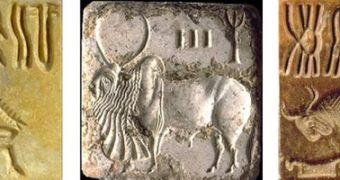The southern Asian continent was an area rich in developed civilizations thousands of years ago, which spoke numerous languages and dialects and left behind impressive monuments to attest for their worth. At this point, however, the archaeological and linguistic remains are so scarce, that experts can't even figure out if they are dealing with a language or with a pretty picture. Such a circumstance applies to a script that belonged to an Indus Valley civilization, which was used between 2,600 and 1,900 B.C.
Ever since it was first discovered, linguists and archaeologists have been having a hard time seeing past the seemingly simple composition of the drawings. In addition, discussions over the origins and the evolution of the language, coupled with the lack of archaeological evidence, means that the experts have remained divided as regards the issue until the present day. Their “salvation” has come from an Artificial Intelligence (AI) machine, which has managed to break the code that has been underlying the symbols found on most artifacts.
“The underlying grammatical structure seems similar to what's found in many languages,” Rajesh Rao, who is a computer scientist at the University of Washington, explained. The AI has also succeeded in determining that the dialect was also a spoken language, and that the images were actually words translated into symbols. The area in which this particular Indus script was spoken now covers eastern Pakistan and northwest India. “One of the main questions in machine learning is how to generalize rules from a limited amount of data. Even though we can't read it, we can look at the patterns and get the underlying grammatical structure,” Rao added, quoted by Wired.
Over the years, since fragments left behind by the extinct culture started getting discovered, more than 1,500 unique inscriptions have been retrieved from pottery fragments, walls, or other artifacts. However, deciphering the language altogether has not proven possible, on account of the fact that the longest such text inscription found is only 27 characters long. Still, despite this shortcoming, some linguists have hypothesized that this dialect played a major role in the development of other languages in the area, and beyond, including Chinese Lolo, Sumerian, Egyptian, Dravidian, Indo-Aryan, Old Slavic, and modern Brahmic scripts.
“The next step is to create a grammar from the data that we have. Then we can ask, is this grammar similar to those of the Sanskrit or Indo-European or Dravidian languages? This will give us a language to compare it to. It's only recently that archaeologists have started to apply computational approaches in a rigid manner. The time is ripe,” Rao concluded.

 14 DAY TRIAL //
14 DAY TRIAL //